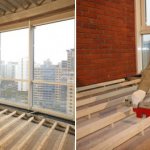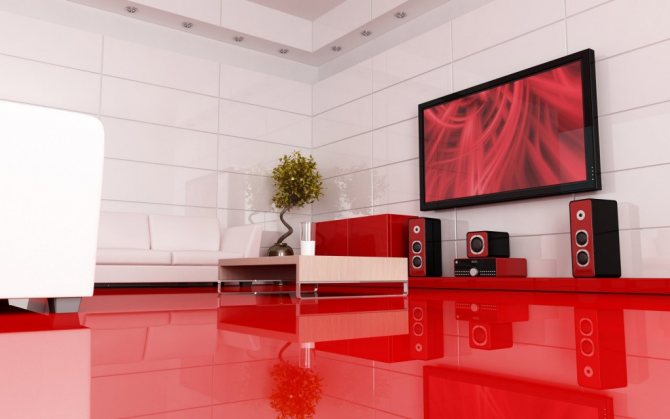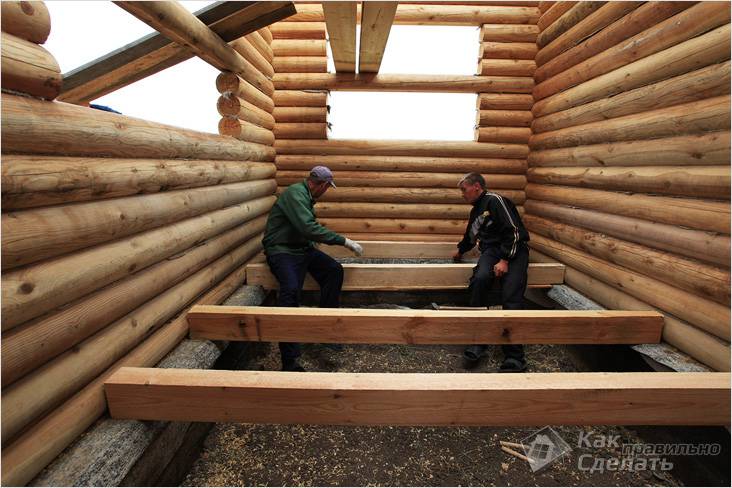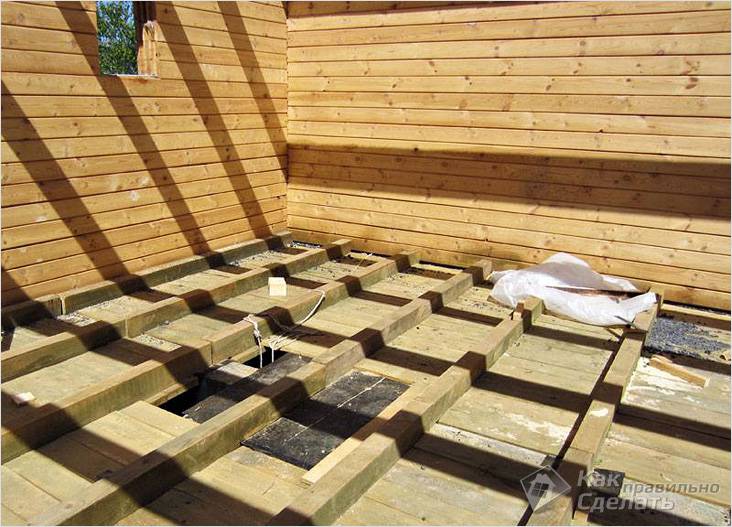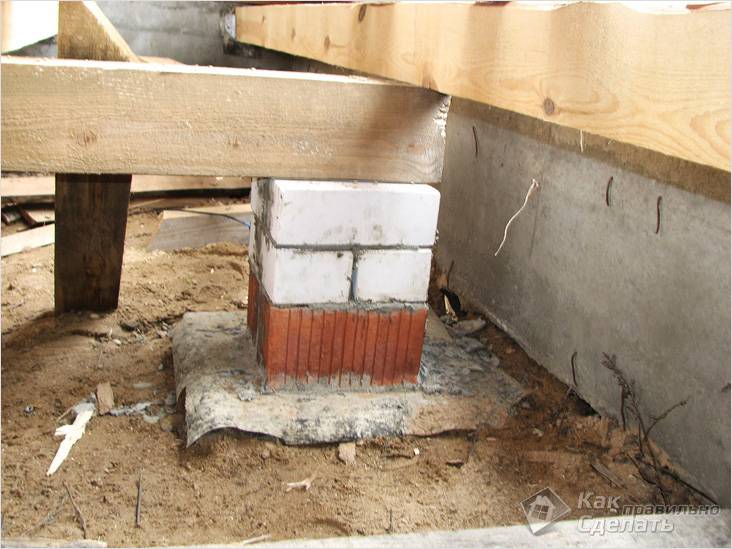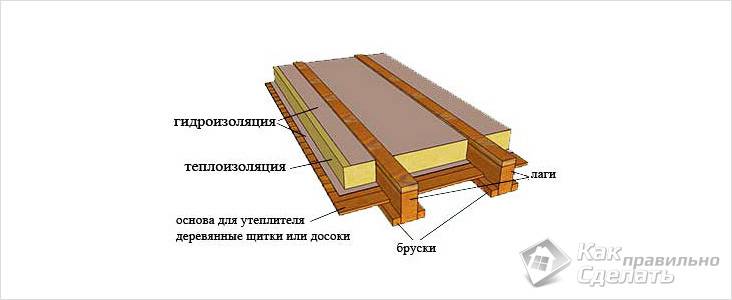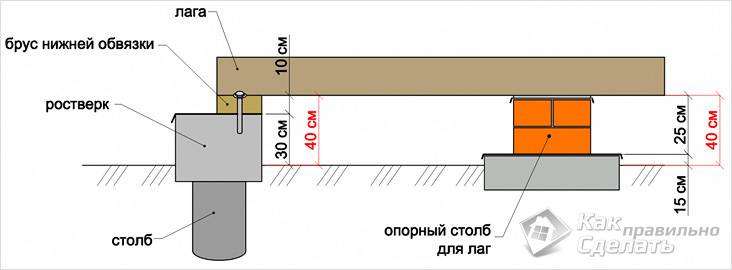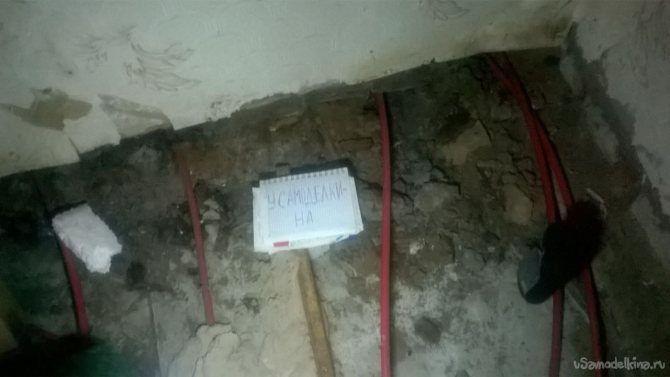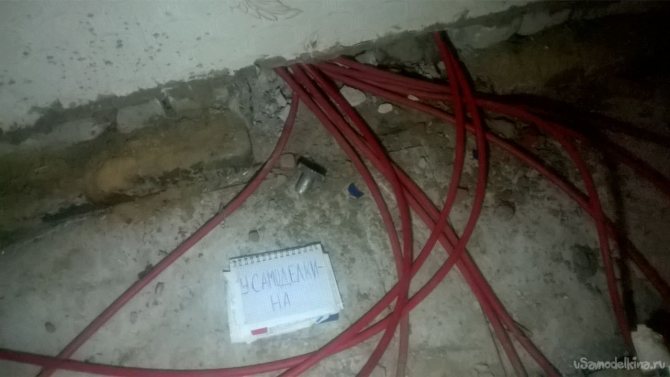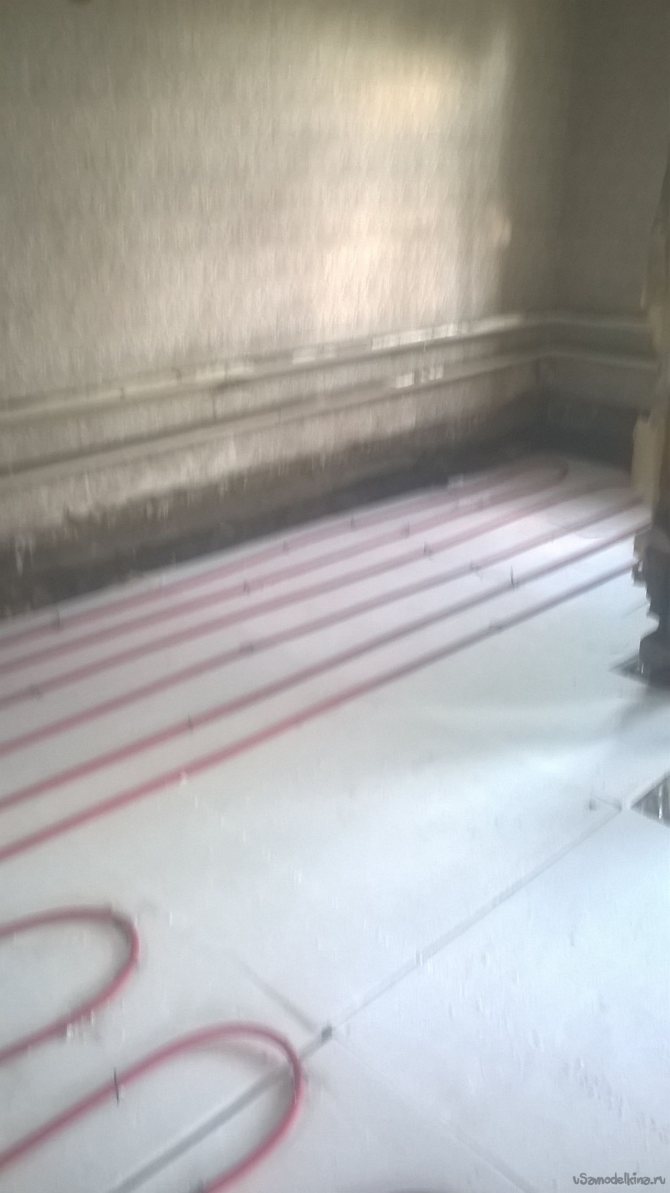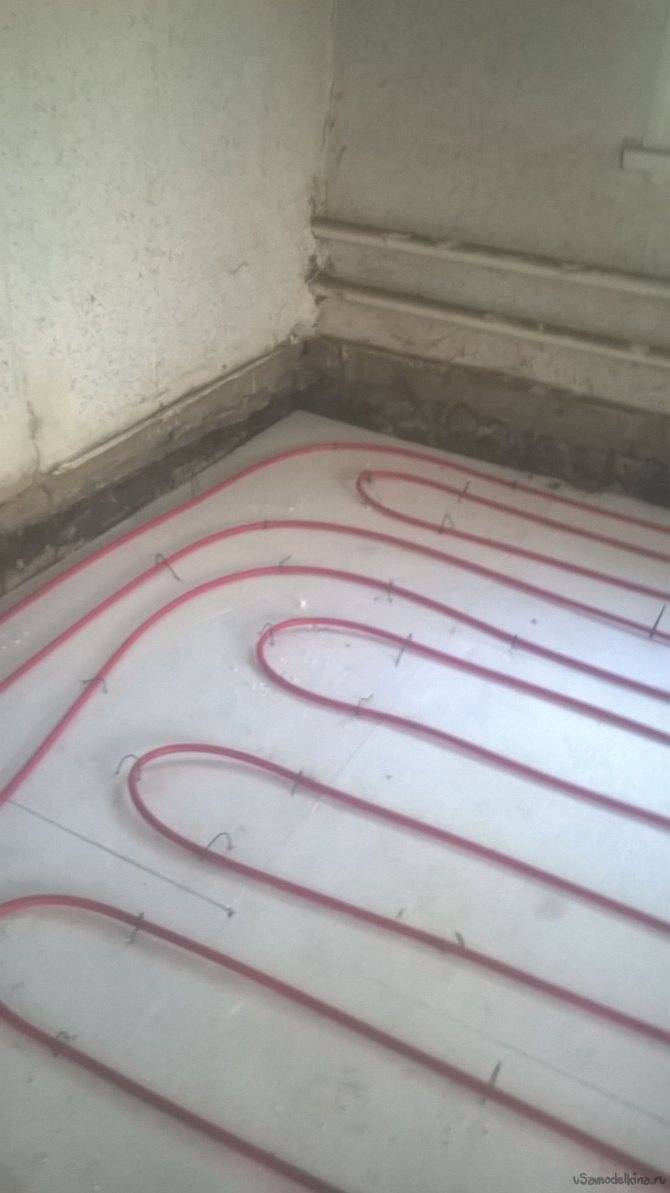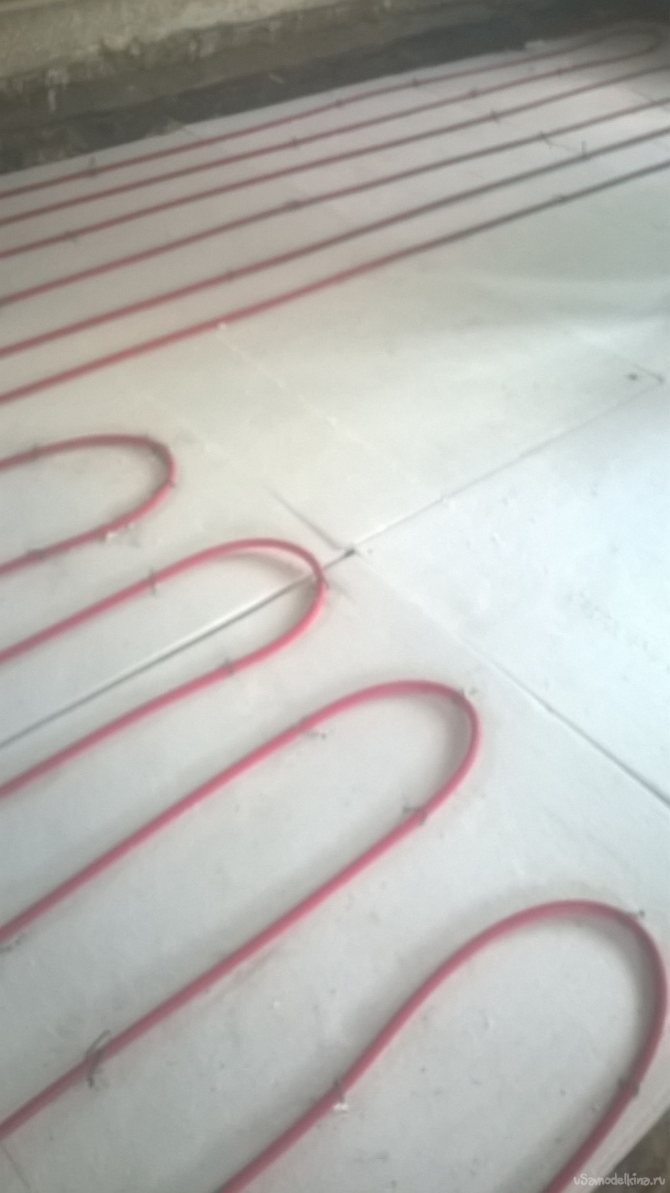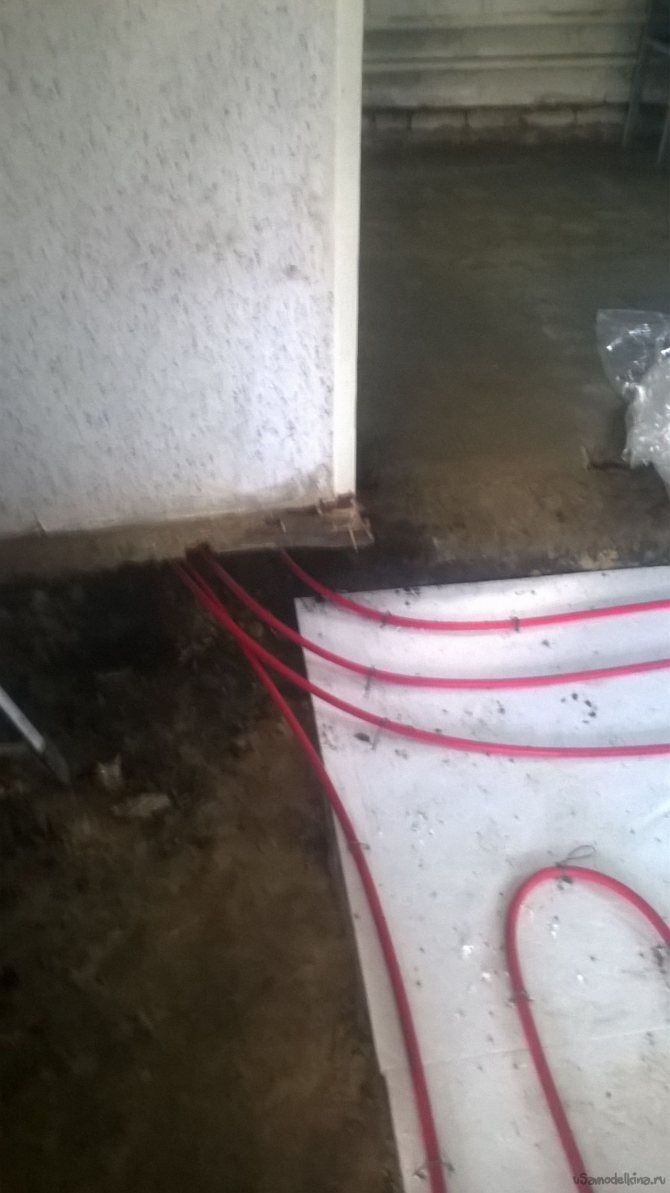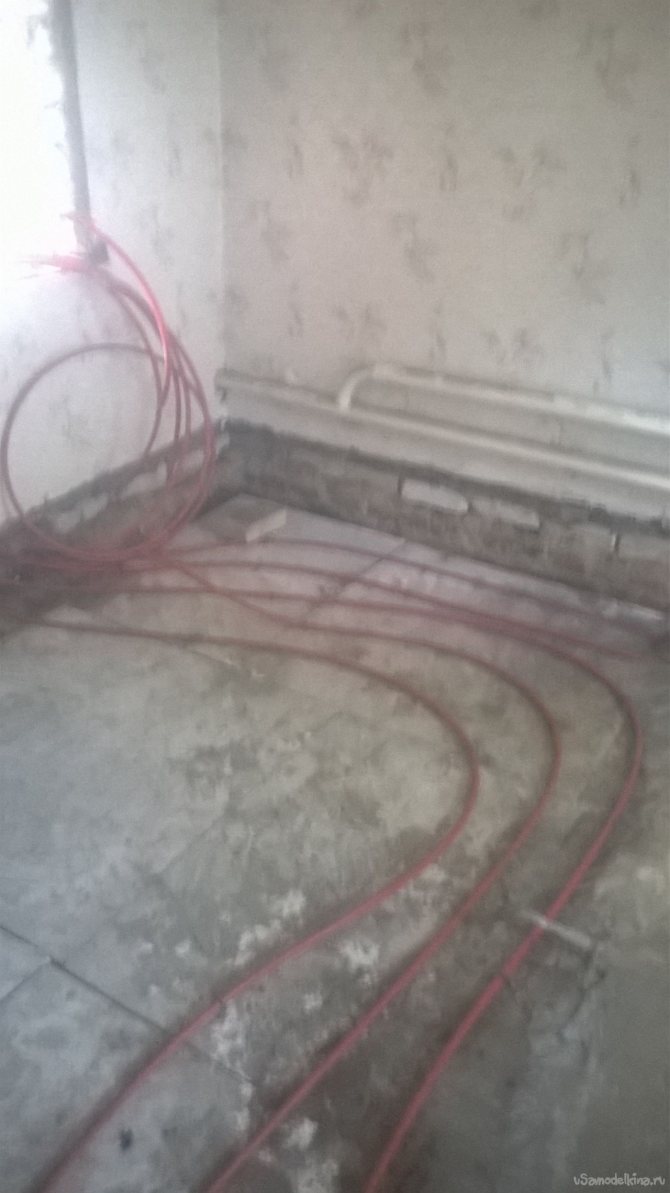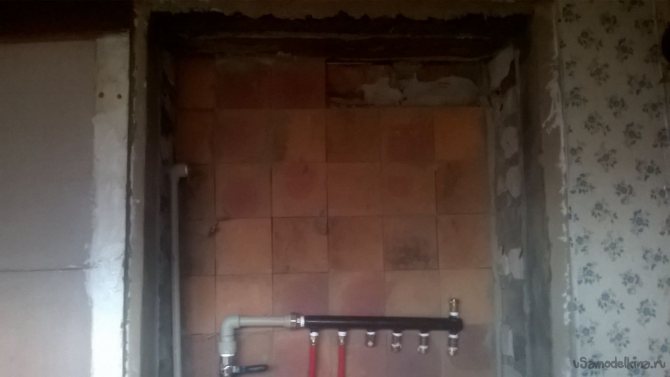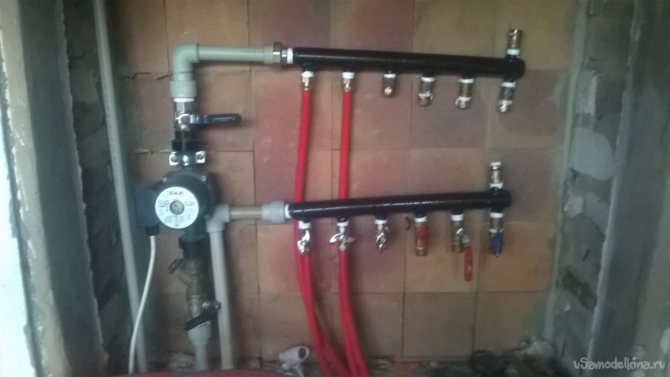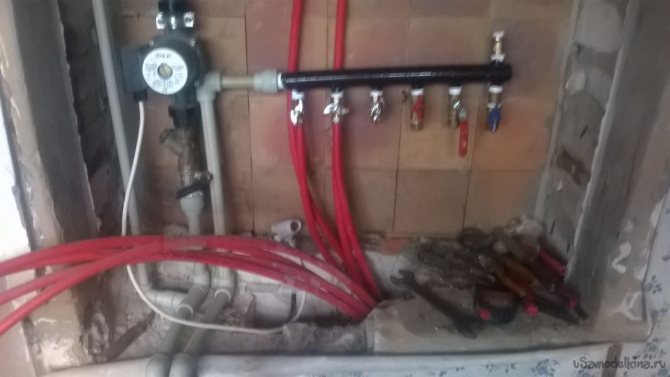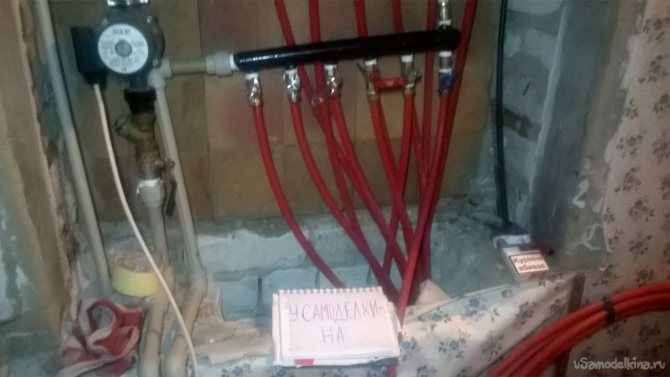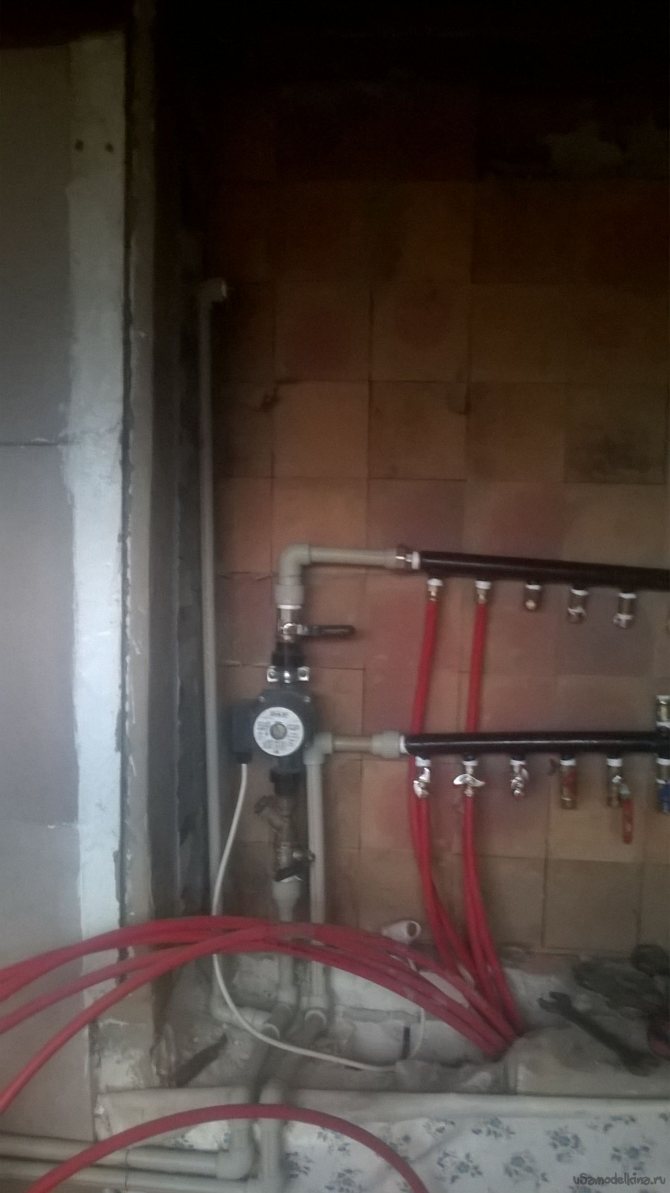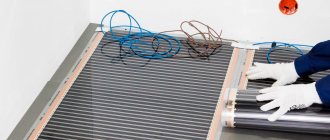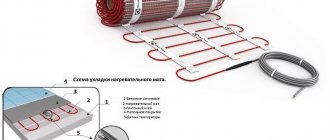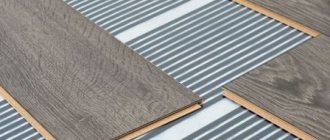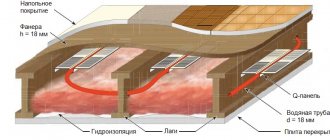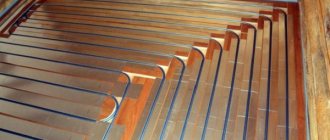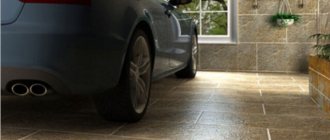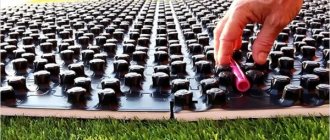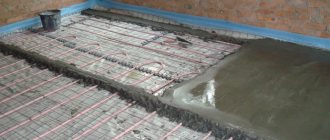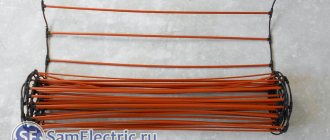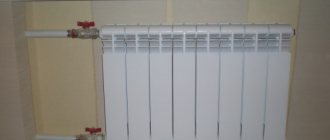The quality of installing a wooden floor on logs depends on the correct formation of the base, the selection and processing of suitable materials, compliance with the instructions and the order of work. Successfully and tastefully made floor will delight owners with comfort and reliability.
Do-it-yourself installation of a wooden floor on logs
- 10.1 Video - Do-it-yourself installation of a wooden floor on logs
Installation benefits
Logs are wooden fragments of a thin elongated shape, which for construction purposes are replaced under the topcoat. Material advantages:
- thermal insulation, partial noise insulation;
- additional distribution of the load on the base;
- surface preparation for finishing screed;
- creation of a ventilated floor, in the thickness of which there is the possibility of placing communication systems.
- increased strength. The floor can withstand loads up to 5 tons per 1 m;
- relatively simplified installation;
- the work will be inexpensive.
Logs can be laid on a base made of earth, it is advisable to make a cement screed before that, also on reinforced concrete or wooden floor slabs in multi-storey buildings.
Lag device
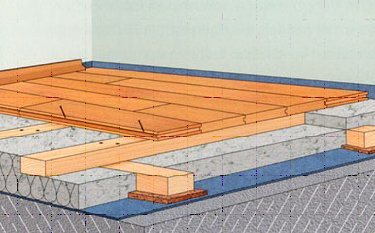
Lag device
Wooden floors. Beams are rarely produced absolutely even, so it is difficult to achieve a strictly horizontal surface during lagging. For ease of installation, they can be attached to the beams from the side. When fixing the supports in this way, there is no need to use a special lining that regulates the height of the log. The lags are fixed with incomplete screws with a length exceeding the cross-section of the bars by more than 2-2.5 times, and with a diameter of 6 mm.
To prevent chips from forming on the wood during installation work, you need to drill holes in the attachment points, which are 2-3 mm smaller in size than the width of the screws. If the boards need to be located at a considerable distance, then the logs should be laid perpendicular to them and with a small step. Finish should be made of thick planks.
Concrete floors. To lay logs on concrete floors, you need to know the design features of the floor mounted in this way.
To exclude dampness of the floor, you need to make a full waterproofing. At the next stage, the insulation is laid, and, if necessary, the soundproofing material. The insulation layers are terminated with a floating cement screed.
On top of the concrete floor, logs are placed, which serve as the basis for the final floor covering. Boards should be more than 2 m long. If the logs are shorter than required to completely cover the base, they must be joined with their ends. When connecting the lags, you need to pay attention so that the location of adjacent joints differs from the joints of neighboring bars by at least 50 cm.
If the screed is not done, waterproofing is still necessary. Logs should not be placed on an unstable insulation, since an unreliable base will contribute to their constant movement, which over time will contribute to the destruction of the finishing finish.
Installation of underfloor heating and its connection (system start-up)
Good day. Today we will talk about how to make a warm floor yourself with your own hands. From the very beginning, I want to express my opinion that the installation of a water-heated floor is not such an expensive pleasure, especially if you approach this issue thoroughly.Next, I will tell you how the installation of a water-heated floor was carried out personally with me, immediately after buying a house.
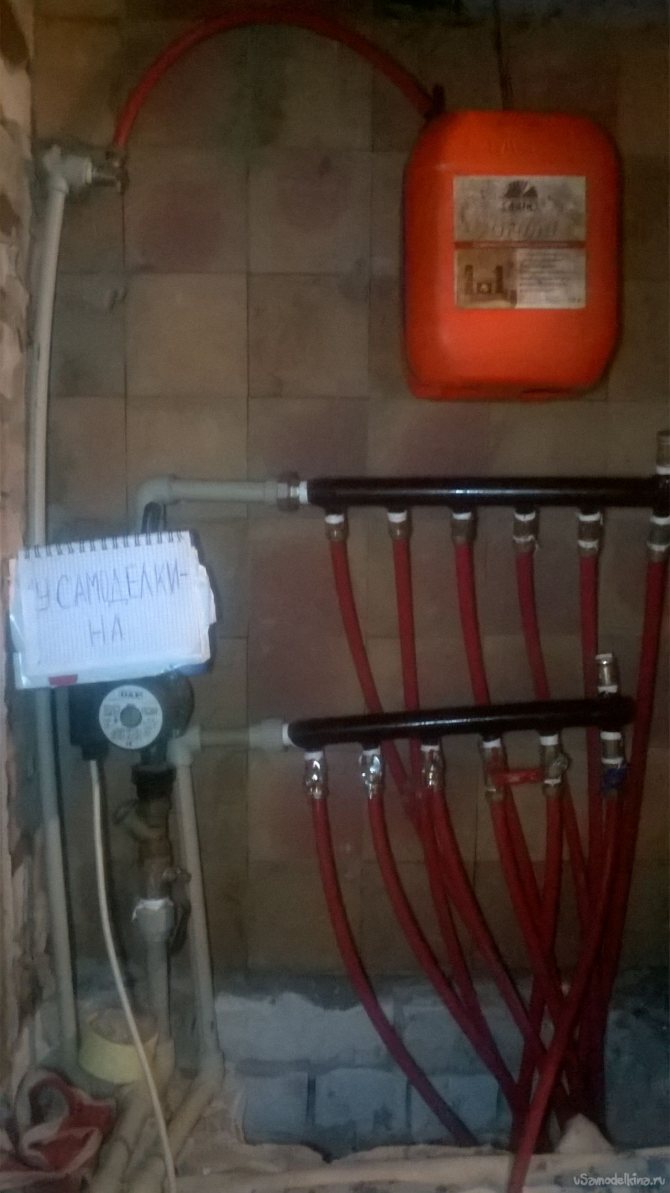

Preparatory stage
The whole process was not filmed and took more than one month. It was not possible to make warm water floors faster due to the main work. Well, there were also other moments that took time, they will be discussed later.
The first thing that was done was tearing off the old wooden floors and partially removing the soil, which filled the space under the floor (this was done in order to increase the height of the ceilings).
Due to the fact that there was no vibratory rammer, the soil was compacted by the usual washing of the soil with water. This process took more than one day, since the pressure jet is not strong, but it was necessary to process 60 m2.
After compaction, the floor was covered with sand, and then again spilled with water. The leveling of the horizontal floor surface was also carried out with sand. At this, the main preparatory stage was completed.
Purchase of materials
A special cross-linked polyethylene pipe for hot water supply was purchased for laying water-heated floors. It was ordered via the Internet by the bay (so it turned out to be half the price).
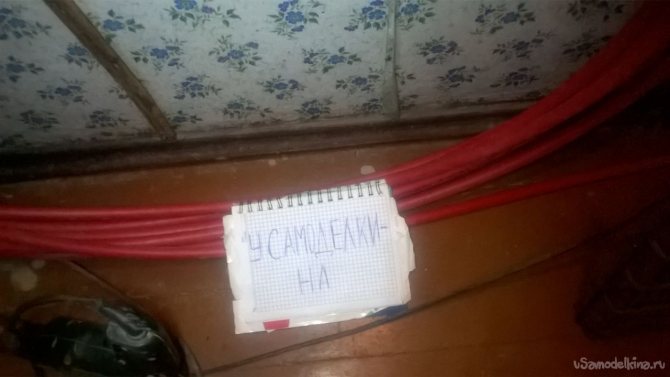

After a long study of the materials offered on the network, it was decided to opt for cheap products, since in terms of their characteristics it was quite satisfactory and did not differ much from expensive goods.
As an example, here's a short description:
• resistance to high temperatures (up to 120оС); • crack resistance; • extraordinary stability of shape (without applying a load, the material does not deform up to 200 ° C); • impact resistance; • high resistance to chemical reagents; • the potential service life of pipes is more than 50 years at a constant temperature of 70 ° C; • resistance to corrosion, etc.
For fastening the pipe, there are special fasteners - anchors. Some manufacturers, when buying a large batch (bay), attach them as a gift. But I was so unlucky. Therefore, an ordinary wire was used for fastening, which was cut into pieces.
In addition to pipes and fasteners, you will need:
1. The usual cheap oilcloth. You can buy a hydro-barrier, but it is more expensive. 2. Sheets of polystyrene (1mX1m). Their number will depend on the area of the house. A 2 cm thick foam is sufficient. 3. Cement, sand, beacons, concrete mixer, concrete trough and a couple of buckets.
Additionally, you can put a reflector, but in my case it was decided to do without it.
Installation process
A hydro-barrier is laid on a prepared flat surface. Its edges should be wrapped around the wall by a few centimeters. Lay out foam sheets on top of the oilcloth. Next, we move on to the very process of installing the pipe.
Initially, you should determine where the comb will be located (the place where the pipes are connected to the common system). We will proceed from this. We leave the tail of the pipe with a margin and begin to lay the pipe. We begin to lay from the wall. Having learned from their mistakes (since at the previous place of residence there were the first attempts to make a warm floor), it is recommended to make all branches of the underfloor heating pipe of the same length. This will allow in the future to evenly heat each room. The size of the room does not matter. If one room is large and the other is small, then 2 branches will need to be launched into the large one. If the second branch is large, then they will not be shortened, but will continue to be sent in the next room.
Despite the large number of examples on the Internet, where it is described that it is necessary to lay pipes for a warm floor with a spiral, I did not do this. I lay the pipe with a snake. The distance between them was slightly less than the foot (41 foot size). After several turns, we return the tail (return) to the place where the comb will be mounted in the future.Another recommendation - after laying one branch, wind its edges (supply and return) with adhesive tape and sign which room. The length of each branch of the warm pipe is 40-42 meters.
After installation, I proceed to pouring the screed. Initially, I expose beacons so that the floor in the house is even. The solution was prepared as follows:
For 1 bucket of 400 grade cement, 4 buckets of sand and water. The amount of water will depend on weather conditions and where the sand is stored. If the sand is wet, then, accordingly, less water is needed. The consistency of the concrete mix should be medium.
The thickness of the screed was 8 cm. For those who say a lot, I disagree, also based on previous experience. Yes, such a thickness will warm up much longer than if you make a screed, for example, 2 cm. But after the whole system has warmed up, it will cool down much longer. Accordingly, the gas boiler will not turn on as often. If the floors are completely heated, and then the heating is turned off, 8 cm of the screeds will cool for about a day. In severe frost, of course, everything will happen faster. With a 2 cm thick concrete underfloor heating, the floors cool down within a couple of hours. After the screed was finished and dried, porcelain stoneware tiles were laid on the floor. This added a few more inches to the thickness of the floor.
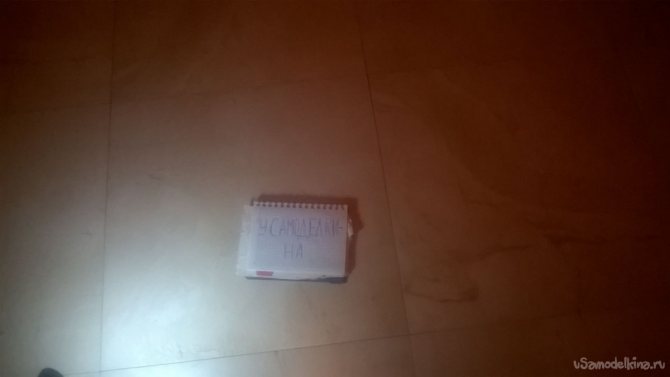

One more thing, I also decided to hide the plumbing pipes for hot and cold water in a screed:
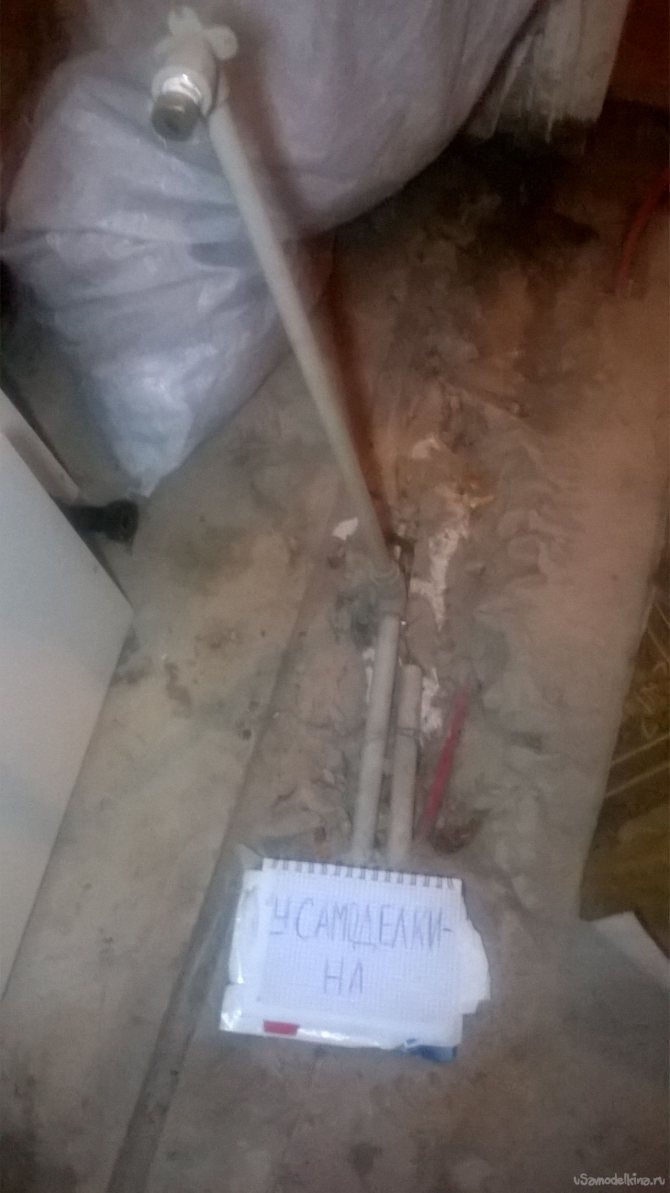

Installing the comb
You can go the easy way and buy a ready-made system, but its cost is rather big. I had the opportunity to do it practically for free. This is where the delay was. I had to wait until all the necessary parts were machined and welded to the tube.
Next, we need:
• fum tape; • cranes; • pump; • Mayevsky crane (preferably automatic).
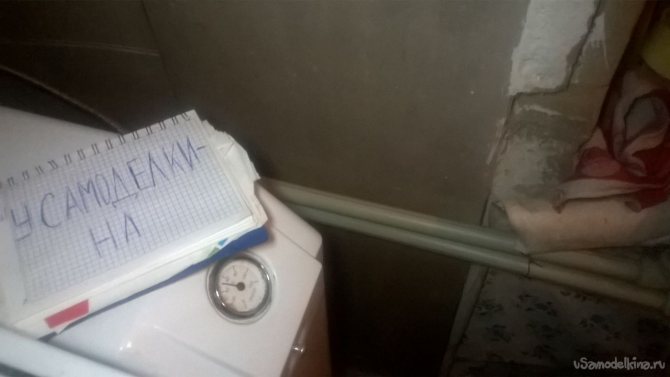

First, we unsolder the plastic pipes from the boiler to the comb. Next, we connect each branch of the warm floor. To do this, take one pair coiled with tape, attach one end to the hot water supply, and the other end to the tap of the return comb. The taps were installed only for the return flow of cooled water to the boiler, since there are enough of them for adjustment.
The expansion tank will also be located next to the entire system. He took it from under a previously used primer. We fill in water and turn on the heating system. All that remains is to wait for all the air bubbles to come out. That is why I recommend Mayevsky's automatic crane, and not like mine.
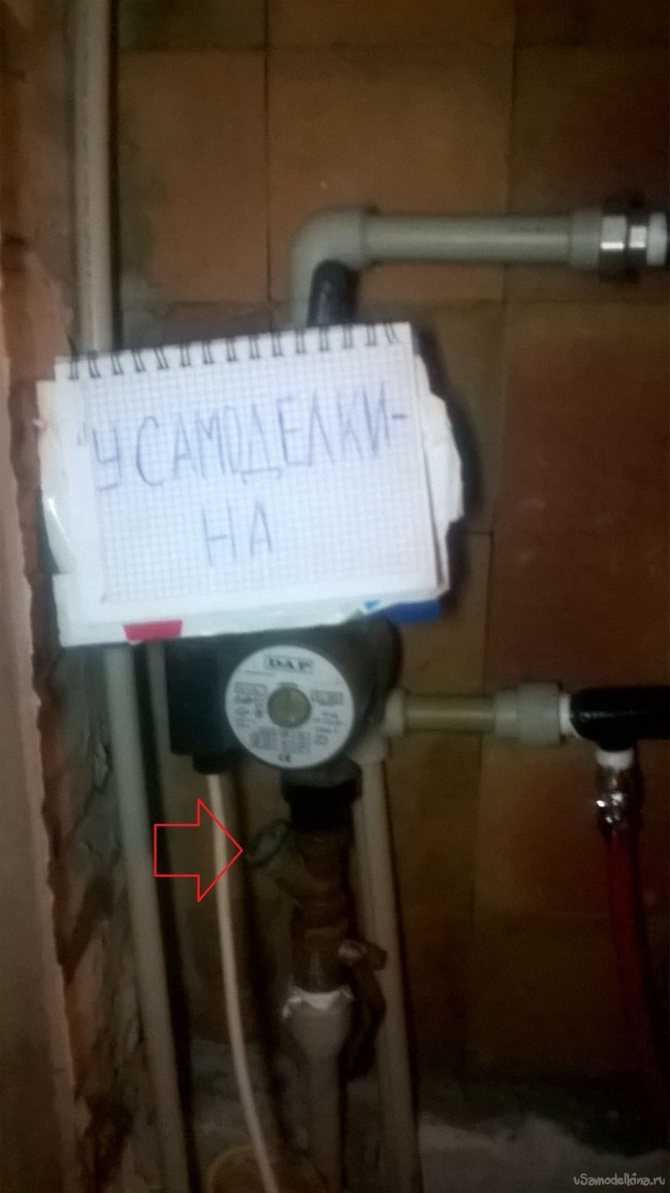

Become an author of the site, publish your own articles, descriptions of homemade products with payment per text. More details here.
Choice of wood
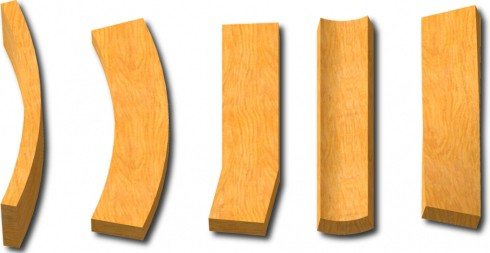

Choice of wood
For the lag, a rectangular section of the bar is used. The height should be two to one and a half times the width. This type of cross-section provides maximum ability to withstand heavy loads.
- The most reliable material is oak. It is possible to perform flooring not only in a residential area, but also in a production facility.
- Siberian larch does not differ in strength from oak, but it has an important feature - not susceptible to decay. Thanks to the resins it contains, you can lay a wooden floor with this material even in a sauna. Larch is more expensive, so it is used less often.
- Logs can be selected from inexpensive woods such as pine, fir or spruce.
- Alder and aspen wood has a positive effect on health, therefore it is recommended to use it in a nursery.
Floor boards can be made from inexpensive wood species only in those rooms where the floor will not have to withstand regular, constant loads, since the wood is quite soft. Traces of any mechanical damage may remain on such a tree.
The type of wood must be selected taking into account the floor covering and its purpose.
- The highest grade is purchased when it is planned to leave the natural-looking floor covering.
- For lacquer coatings, it is desirable to purchase a first grade material.
- When painting, you can give preference to wood of the second grade.
To create reliable floors, wood of 2 or 3 grades with an approximate moisture content of 20% is usually sufficient.
The optimum moisture content of wood is about 12-14%. If it is more, it is necessary to additionally dry the material, too high humidity can cause cracking.
The boards must be free from defects, so it is advisable to inspect the goods before purchasing.
To avoid a shortage of material, you need to buy 10-15% more material than it is supposedly required.
So that the tree does not succumb to mold, is not susceptible to bugs, fungus, you need to treat the entire tree that will be under the floor with an antiseptic composition. Boards on the underside require two processing times. The composition is applied at intervals of 3-5 hours. It is recommended to purchase water-soluble products, since a brush or spray device is sufficient for their application.
The most famous antiseptics for wood are sodium fluoride, sodium fluorosilicate, ammonium fluorosilicate.
Filling rules
Before starting the warm water floor, it must be filled. The filling method is selected depending on the type of system and the heat carrier, which is used both water and antifreeze. In the future, pouring liquid into the warm floor will have to be carried out annually, and each time before this, the pipes must be flushed. Water is poured into the system, which continues to drain until it remains clean.
The first stage of filling is common for any option. Before filling the underfloor heating system with heat carrier, all fittings are opened. Including shut-off valves, valves on the manifold, three-way valve on the mixing unit, air vents. The next steps depend on what kind of coolant is poured into the pipes, water or antifreeze, and the type of heating.
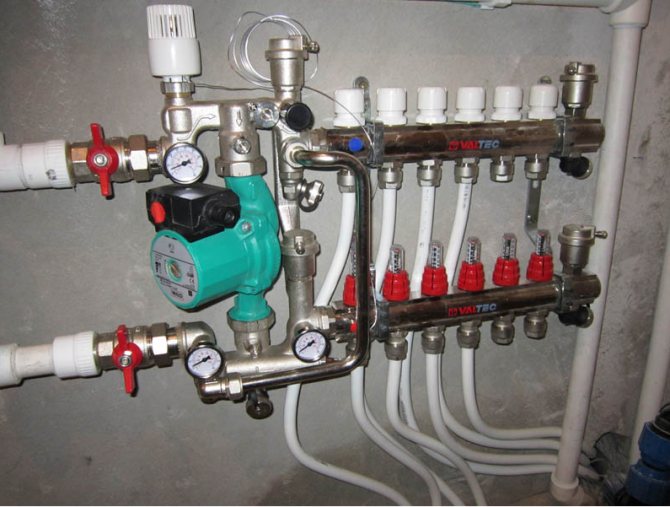

For a closed water system, before starting the warm floor through the collector, perform the following actions:
- wait until all the air has left the pipes;
- turn on the circulation pump;
- keep the pumping equipment on for about 3 minutes, until most of the air leaves the system, taking turns closing and opening the valves on each circuit (if there are several);
- turn off the pump.
When using an open system, before starting the underfloor heating, perform the same actions as for closed heating. The differences lie in the absence of a pump for moving the coolant and in the fact that only water can be used for it. In this case, the air is removed due to the pressure in the water supply system, from which the floor is filled with liquid. First, the circuits are filled with a tap on the manifold, connecting the hose to the pipes. Then the valve is closed and after a while it is opened, adding liquid, the pressure of which drops as the air escapes from the pipeline.
Before starting the underfloor heating using antifreeze (the advantage of which is to maintain a low temperature), the system is poured using a special technique. To fill, you need special equipment - a crimper. The hose of the device is connected to the manifold and the coolant is pumped into the pipes. After filling the system with antifreeze, they get rid of excess air, including the pump.
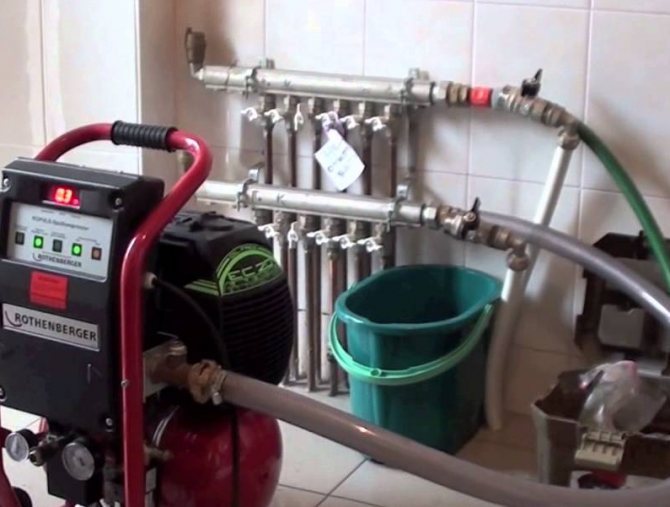

Correct styling
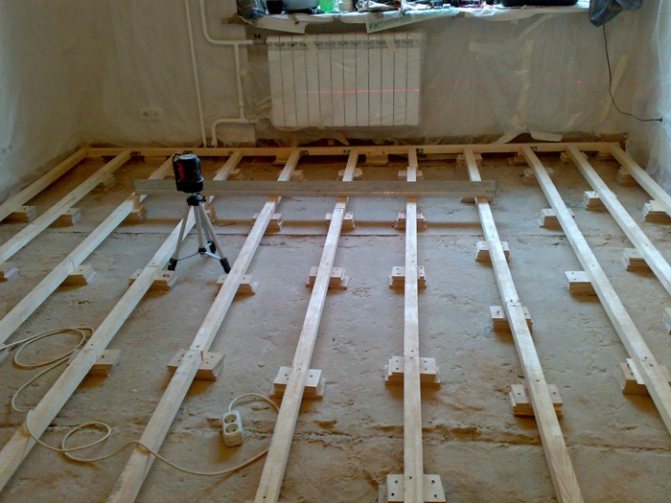

Correct styling
- The surface on which the lag reinforcement needs to be done must be washed and carefully primed.
- Wooden beams and beams must be dried, then treated with an antiseptic compound.
- Sound insulation can be done using mineral insulation, foam or wood-based materials.
- It is not recommended to make the gaps between the lags more than 40-50 cm.
- The surface of the log is measured in accordance with the horizontal marks using a long level, which is located across the beams. If there are no gaps between the beams and the level, then the work was done correctly. In case of discrepancies, you need to level the surface by changing the level of the substrate / anchors under a certain lag.
- Logs should be installed perpendicular to the larger side of the room. The finishing board is placed at a 90 ° angle to the joists. It is advisable to form the layout of materials so that the finishing coating is installed parallel to the sun's rays, that is, with the long side to the window.
Installation of logs and installation of the floor on concrete
In high-rise apartments, where the floors are made of concrete, it is the basis for the floor covering. When installing logs, difficulties arise with attaching wooden elements to a solid surface. Craftsmen use different types of fixing the supporting structure: fixing with long nails (dowels) or metal corners.
In small rooms, the lag splicing technology is used. The result is a prefabricated structure. It is performed back to back or in half a tree. It is important that the length of the piece that is "incremented" does not exceed 1 meter. When splicing several lags, the following rule is followed: the seams of adjacent bars should be located 50 cm from each other. This will distribute the load on the floor evenly.
In the process of repairing the apartment, at the first stage, the dismantling of the wooden floor, which has become unusable, is carried out. Old boards are examined, leaving those that are well preserved and can be reused.
Attention! After removing the old structure, it is advisable to revise the dismantled material. This can save money on the purchase of new products.
The installation of new wooden floors in the apartment is carried out in the following order:
- remove dirt, dust, thoroughly clean and level the concrete base. It should not have deep cracks and chips. They are sealed with cement-sand mortar. It takes time for it to solidify;
- then they put lags. In apartments with low ceilings, it is worth using thin bars. Usually, products are taken 50 mm in thickness. They are placed with an interval of 40-50 cm;
- if necessary, carry out thermal and noise insulation. For this, a layer of waterproofing material is laid. A layer of expanded clay is poured on it or mineral wool mats are laid. These materials fill the space between the bars. A vapor barrier sheet is placed on top of them;
- then subfloors are laid from plywood, OSB or gypsum fiber board. They are necessary for laminate, linoleum, carpet. If natural grooved board is supposed to be used as a floor covering, the sheets do not need to be laid. The floorboards are attached directly to the logs.
Attention! In apartments with low ceilings, a floor installed on logs will "eat" a few centimeters of height. In them, the boards are laid directly on concrete.
How to properly dismantle a wooden floor and the device of a new coating will show a video.
Adjustable lags
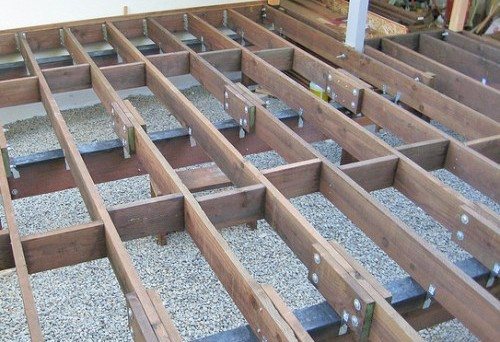

Adjustable lags
Pre-threaded holes are made in the new design beams to simplify their installation. The lag can be adjusted by rotating the bolts, with the help of which the position of the beams changes quickly. When the level is adjusted, the rest of the bolts are cut off. Installation is pretty post:
- fasteners are screwed into the production recesses on the logs.Up to 5-6 fasteners will be required for 2.5 meters of the beam;
- the lag is laid out, at the same time the distance between them is measured and leveled;
- in the ceilings, recesses are formed for fastenings for adjustable lags - dowel-nails;
- the finishing coating is laid - wood boards.
Video - Adjustable lags
Floor installation
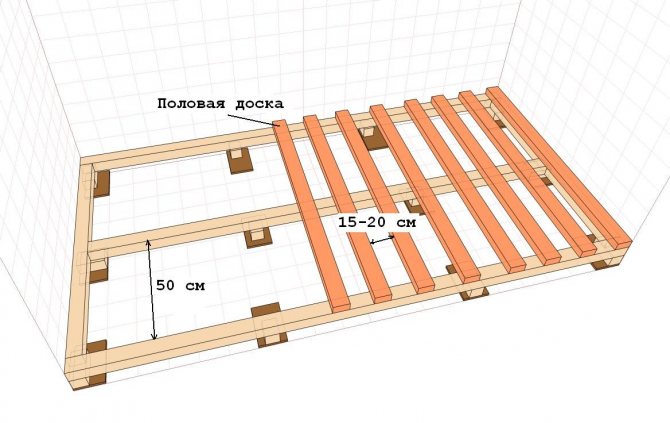

Floor installation
If the wooden floor is properly laid, its appearance will delight you with originality. Wood flooring does not harm the environment and human health. Other main advantages are also highlighted:
- the floor surface is easily leveled;
- the ability to provide good thermal insulation properties;
- simple installation that can be done quickly enough;
- saving material resources, compared with other options for arranging floors;
- good sound insulation performance;
- there is a possibility of placing communications under the floor.
For work, you will need the following materials:
- puncher;
- laser or conventional level;
- electric saw;
- drill;
- screwdriver;
- floor boards and logs;
- insulating materials, among which there is necessarily waterproofing, and for living quarters and insulation;
- hardware (anchors, screws, nails).
First, the optimal distance between the lags is calculated, then they are laid on the waterproofing material (film). To make the surface even, be sure to use a level. Anchor bolts are used to attach the bars to the concrete. For the rest of the bases, you can use dowels. To calculate the required bolt length, you need to add 6-8 cm to the section of the log.
Finishing cladding
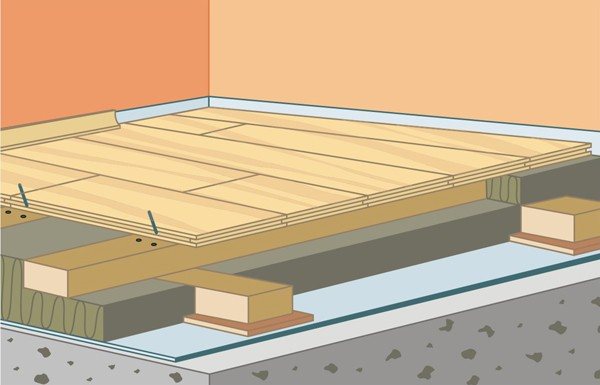

Finishing cladding
The floor of wooden planks is laid from the corner of the room. The first row should adjoin the wall with a gap of 1 cm. This distance is needed to level the possible deformations of the tree under the influence of loads or temperature fluctuations.
The next row is shifted in comparison with the previous one by 2 positions. To make the boards fit as tightly as possible, you need to tap with a small hammer, which is applied to the side of the installed log.
When the boards are fixed to the walls, the fasteners must be placed on top. This will not affect the appearance, because their heads will cover the baseboard. In other cases, the boards are attached only to the bottom of the grooves. The screws along with the caps are placed behind the board, therefore they are successfully masked.
Upon completion of the installation of the boards, you need to install the skirting boards.
Laying boards: tips
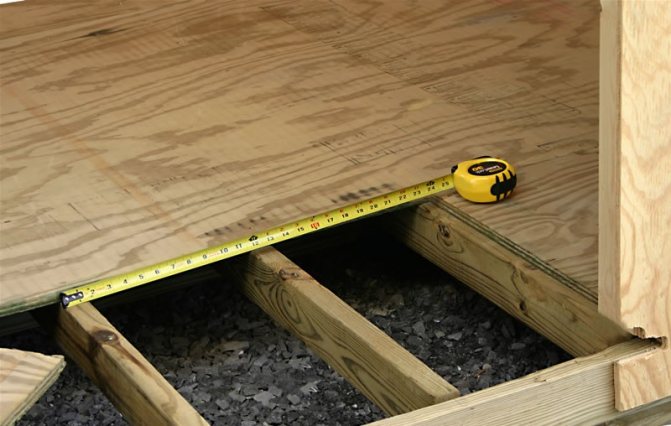

Laying boards
- The installation of wooden floors can be started after the installation of all the logs, checking their stability and compliance with the level.
- The boards are fixed to the logs, no fastening must be missed, as this can violate the integrity of the coating due to the loosening of the log.
- During installation, you need to place the joints of the boards on the middle part of the log.
- To make the coating as reliable as possible, you need to tighten them with staples using a construction stapler before fixing the boards with fasteners.
- To avoid the formation of cracks from the fasteners, you need to drill small holes in advance, use a thin drill.
- To mask the cracks, you can put a fillet instead of a baseboard.
- To properly drill the holes for the pipes, you need to calculate their diameter, and then add about a centimeter to it.
Clean flooring
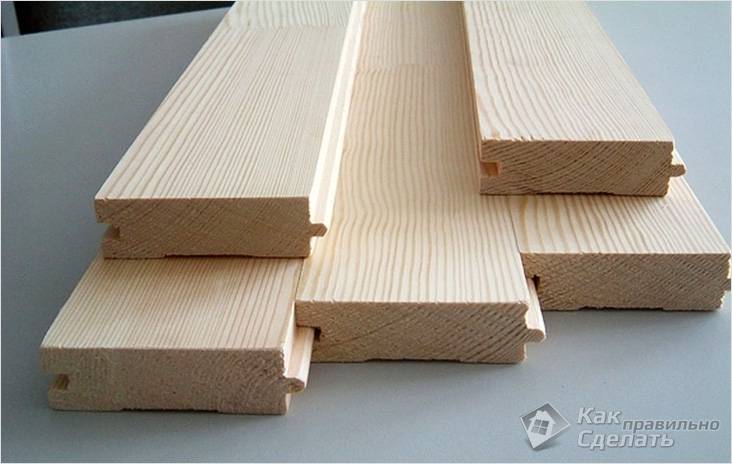

Tongue-and-groove board
For a clean floor it is necessary to use a tongue-and-groove board, which has a thorn-groove system, that is, a thorn is located on one side of it, and a narrow groove or groove on the other, into which the thorn of the next board will fit tightly.
All wood flooring materials must be thoroughly dried beforehand.
Wood flooring always starts from the far side of the room. After the board has been laid across the log, it is necessary to move it almost close to the wall. Then it is necessary to place a 2 cm thick gasket between the wall and the board, and then fix the board with self-tapping screws.One self-tapping screw is screwed into the edge at the wall on top of the board, which will hide under the plinth. From the side open side of the board, it should be screwed directly into the groove at a 45º angle.
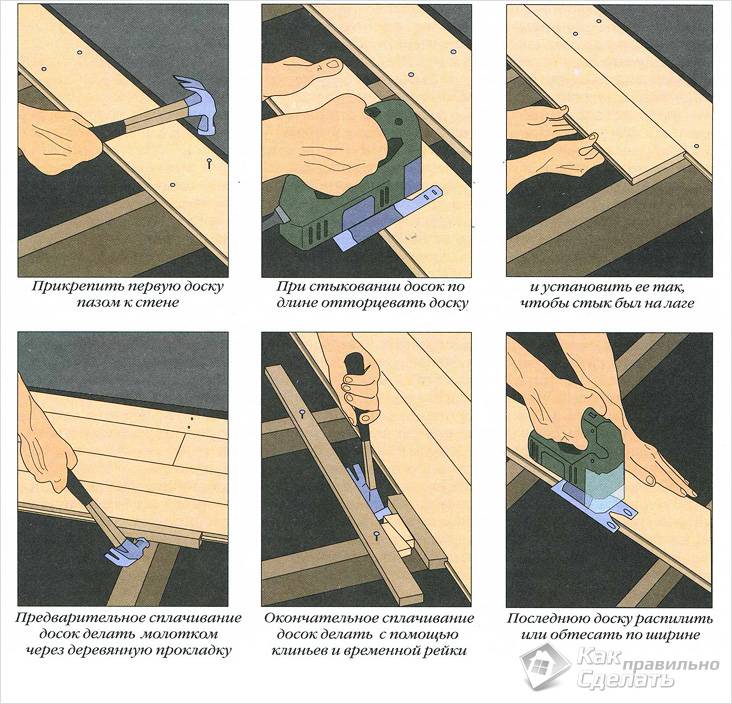

Mounting scheme for tongue-and-groove boards
Then the tenon of the next board is inserted into this groove. Having knocked out a board with a mallet (a mallet is a hammer with a rubber or wooden knob), you can continue to screw the screws into the groove, observing the step between them. Then the spacers between the wall and the board are removed. As a result, a gap of about 2 cm remains around the entire perimeter between the floor plane and the adjoining wall - it is needed so that the tree can breathe freely. During the year, the air humidity will change, and the gap will prevent deformation of the floor plane.
An alternative to a grooved board can be chipboard sheets, plywood and OSB. Their advantage is the higher speed of work due to the overlap area. In addition, the end result is fewer joints. Therefore, these materials are good if you plan to lay laminate or linoleum later.
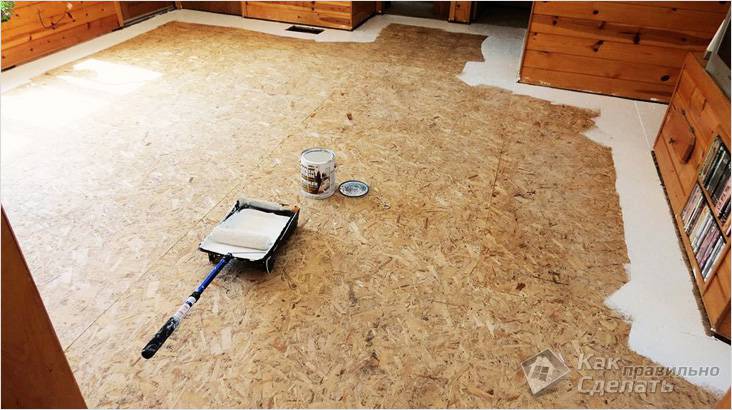

OSB floor
Such chipboards are screwed to the logs from above. For the self-tapping screw, a recess is made, "sweep" so that the self-tapping head does not stick out above the plane of the finished floor. Then all these grooves must be putty. You should also do with the joints of the plates. However, the joints must be putty with acrylic sealant, otherwise, if you use non-plastic putty compounds, they will subsequently crack and crumble. And over time, all these grooves and seams will appear in the form of scuffs on the linoleum, which will disturb the decorative effect of the general appearance.
When choosing a material for the floor, one must not forget about one important aspect: the thinner it is, the narrower the span between the logs should be. For example, if the thickness of the laying material is 20 mm, then the space between the logs should be no more than 30 cm. The strength of the floor will depend on this.
By applying these tips, you can confidently tackle your flooring work. Successful work!
Fine finishing
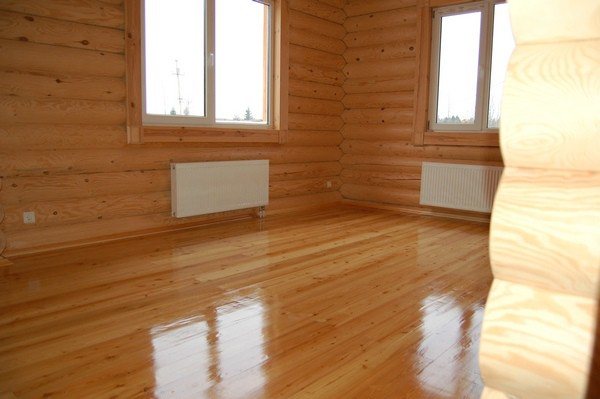

Fine finishing
It is necessary to get rid of irregularities on the floorboards, level the ledges, level differences. You can use a sander. With its help, it is easy to make the floor completely flat by simply walking the device over the entire surface. If you do not have a sander, you can quickly remove any noticeable imperfections with large sandpaper, and then use a fine-grained sandpaper to polish the base.
For the floor, you need to apply a special coating that can increase its resistance to damage. Main varieties:
- grinding;
- impregnation with oil mixed with drying oil;
- leaching with soda (treatment with a solution similar in consistency to an ointment);
- parquet varnish;
- painting;
- wax mastic.
When applying impregnation, paint or varnishing, care must be taken to apply the coating in movements that are parallel to the grain of the wood. Then the heterogeneity of the layer formed in the shape of the movements of the roller or brush will be smoothed out.
Following the technologies for arranging a wooden floor on logs will ensure its durability and aesthetic appeal. Compliance with the recommendations for the choice of material and preparation of the base will ensure the reliability of the floor, the work can be done once for many years.
Video - Do-it-yourself installation of a wooden floor on logs
Laying logs on the ground
This method of installing wooden floors is used in the construction of low-rise, light residential or utility structures. The price for it is low. Labor costs are negligible. You can build such a structure with your own hands alone.
- Under the cross beams, a small layer of soil is removed and the base is leveled.
- A layer of sand and fine gravel is poured over the entire area.
- At a step of 50-60 cm from each other, thin logs or timber treated with antiseptics are placed.
Attention! Treatment with protective equipment is important in this case.Without it, the tree will quickly rot, it will be eaten away by rodents and insects.
- If desired, you can insulate future floors using any bulk materials: expanded clay, vermiculite, sawdust.
- A rough floor is laid on top of the beams. For him, a low-cost unedged board is used. The uneven edges of the products create gaps, which are necessary for natural ventilation and better preservation of the boardwalk. Rough parts are covered with protective agents.
- A finishing coating is mounted across the boards of the first tier of the floor. Its function is performed by carefully processed, even and smooth floorboards. If a grooved board is used, the price of which is slightly higher than the lining, the products are fastened with a thorn-groove connection and fixed with brackets (self-tapping screws) to the rough flooring and logs.
The installation of the floor on the ground is carried out after the construction of the walls. They do not make any holes for the beams. In old houses, wooden floor parts that have served their purpose are replaced without affecting other surfaces.

